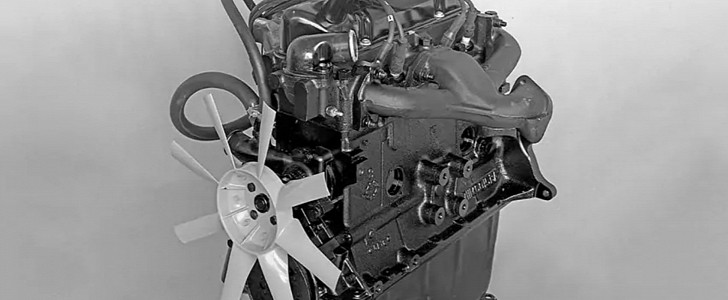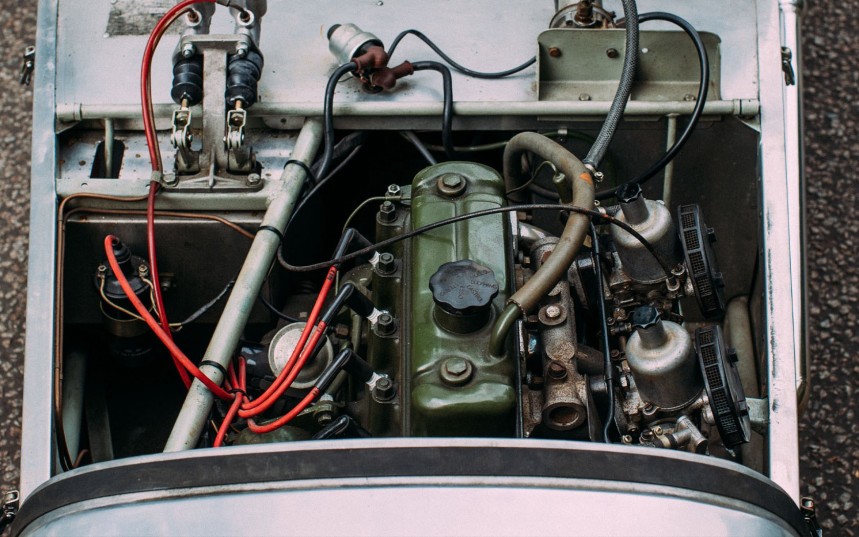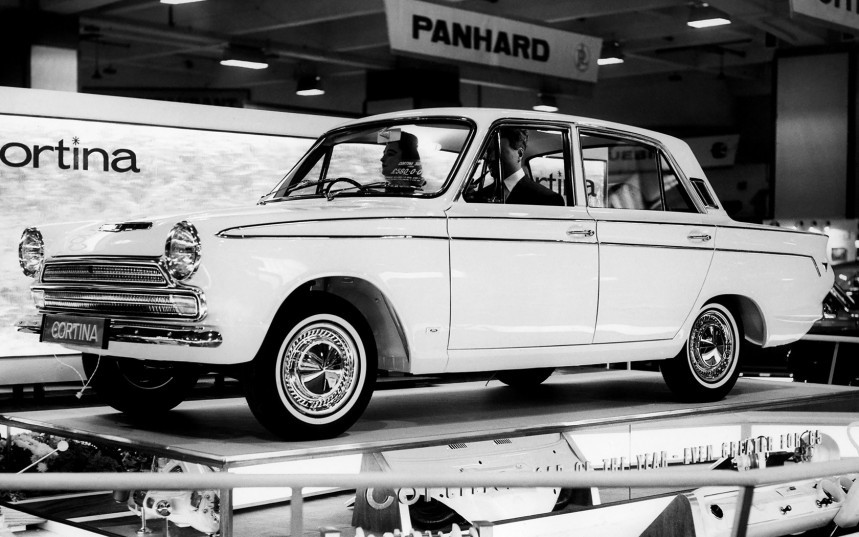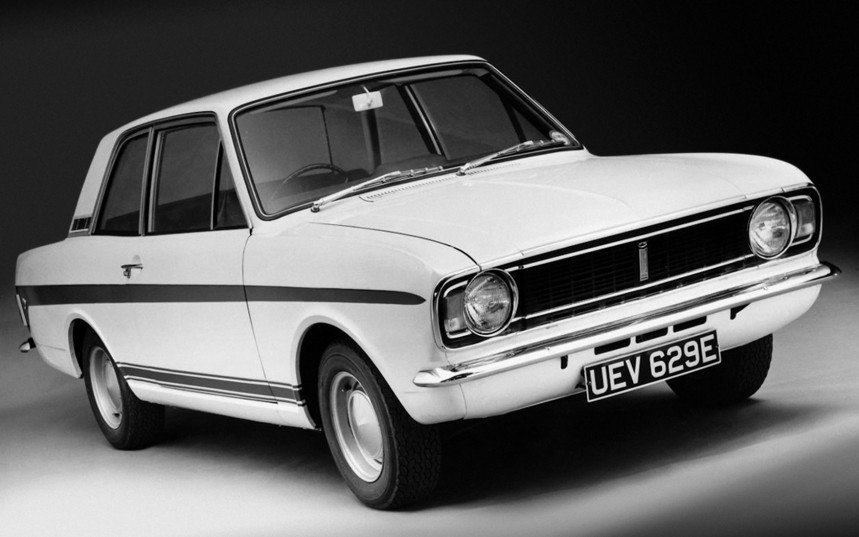Over the years, the American manufacturer has built some of the most legendary V8s the world has ever seen, including the Y-Block, 385 Big-block, 427 SOHC, or the Coyote. The Blue Oval is also responsible for one of the most important engines in the history of the industry, the multifaceted ‘Kent’ inline-four.
The engine family can be divided into three basic sub-families; the original pre-Crossflow Kent, the Crossflow that became the most prolific version of them all, and the transverse-mounted Valencia.
It all starts more than half of century ago in Europe, where Ford began the development of a new powerplant that would replace the outdated lineup of four-cylinders to meet the growing demand for new, dependable vehicles.
The goal was to build a compact, lightweight engine that would be reliable, easy to produce, and able to power a wide variety of Ford models. Using a cast-iron block and cylinder head with an overhead-valve, reverse-flow configuration, the new 1.0-liter Kent was born.
It debuted on the Ford Anglia, which was launched in the UK in 1959, developing no more than 39 hp, which was not bad for that era.
In the following years, due to the ever-growing demand in various markets, engineers realized they needed more power and improved it by enlarging its stroke and thus its displacement.
Available in 1.2, 1.3, and 1.5-liter variants, it was used on a variety of models, including the Consul Classic, Consul Capri, the first generation of the famous Cortina, or the second series of Colin Chapman’s Lotus Seven.
Eight years after the first Kent was assembled, it received a major redesign, which gave it a highly efficient crossflow type cylinder head. It also featured a change in combustion chamber design, using a Heron type construction in the top of the piston rather than the head. The head itself was flat with each available engine capacity (1.1 and 1.3-liter), using different pistons with distinct-sized bowls.
The big brother of the crossflow family was the 1.6-liter, which had stronger ‘square’ bearing caps and small combustion chambers in the near-flat head.
To significantly improve reliability, the 1.3 and 1.6-liter received upgraded blocks in 1970, with thicker walls, stronger main bearing caps, large diameter cam followers, and wider cam lobes.
The Crossflow Kent was used in the second-gen Cortina, Capri, the first and second editions of the European Escort, as well as the North American Ford Pinto.
It would receive another comprehensive redesign in 1976 to suit the transverse installation, mainly for the first-generation Fiesta, giving birth to the Valencia variant. With two additional revamps in 1988 and 1995, it became Ford’s primary powerplant for the compact range until 2002.
Mind you, this engine had a profound influence on motorsport as well, as it became the mandated spec engine of the Formula Ford, which was established in the late ‘60s in England.
The entry-level series that debuted on the famous Brands Hatch circuit in 1967 quickly took off, reaching mainland Europe, the U.S., and spreading as far as Brazil by 1971.
Over the years, the series kickstarted the careers of many legendary drivers, including Ayrton Senna, Michael Schumacher, James Hunt, Emerson Fittipaldi, Jody Scheckter, Mika Hakkinen, or Jenson Button.
In the U.S, Kent-powered open-wheelers raced in Formula Ford up to 2010 when the Sports Car Club of America replaced it with the Honda L15A i-VTEC and rebranded the competition Formula F.
Moreover, some of Lotus' and Cosworth’s early engines were based on the reliable Kent, like the Lotus-Ford Twin Cam or Cosworth TA, which powered some insane cars of the ‘60s and ‘70s. Those included the Lotus Cortina and Seven Twin Cam, or Ford Escort Twin Cam.
Legend has it that the unit gets its name from Alan Worters, the company's Executive Engineer at that time, who lived across the river from Ford's Dagenham plant in the English county of Kent.
Even though big, powerful V-configuration engines will always be more popular in the minds of gearheads, the small inline-four Kent remains one of the most influential powerplants in automotive history.
It all starts more than half of century ago in Europe, where Ford began the development of a new powerplant that would replace the outdated lineup of four-cylinders to meet the growing demand for new, dependable vehicles.
The goal was to build a compact, lightweight engine that would be reliable, easy to produce, and able to power a wide variety of Ford models. Using a cast-iron block and cylinder head with an overhead-valve, reverse-flow configuration, the new 1.0-liter Kent was born.
In the following years, due to the ever-growing demand in various markets, engineers realized they needed more power and improved it by enlarging its stroke and thus its displacement.
Available in 1.2, 1.3, and 1.5-liter variants, it was used on a variety of models, including the Consul Classic, Consul Capri, the first generation of the famous Cortina, or the second series of Colin Chapman’s Lotus Seven.
Eight years after the first Kent was assembled, it received a major redesign, which gave it a highly efficient crossflow type cylinder head. It also featured a change in combustion chamber design, using a Heron type construction in the top of the piston rather than the head. The head itself was flat with each available engine capacity (1.1 and 1.3-liter), using different pistons with distinct-sized bowls.
The big brother of the crossflow family was the 1.6-liter, which had stronger ‘square’ bearing caps and small combustion chambers in the near-flat head.
To significantly improve reliability, the 1.3 and 1.6-liter received upgraded blocks in 1970, with thicker walls, stronger main bearing caps, large diameter cam followers, and wider cam lobes.
It would receive another comprehensive redesign in 1976 to suit the transverse installation, mainly for the first-generation Fiesta, giving birth to the Valencia variant. With two additional revamps in 1988 and 1995, it became Ford’s primary powerplant for the compact range until 2002.
Mind you, this engine had a profound influence on motorsport as well, as it became the mandated spec engine of the Formula Ford, which was established in the late ‘60s in England.
The entry-level series that debuted on the famous Brands Hatch circuit in 1967 quickly took off, reaching mainland Europe, the U.S., and spreading as far as Brazil by 1971.
Over the years, the series kickstarted the careers of many legendary drivers, including Ayrton Senna, Michael Schumacher, James Hunt, Emerson Fittipaldi, Jody Scheckter, Mika Hakkinen, or Jenson Button.
In the U.S, Kent-powered open-wheelers raced in Formula Ford up to 2010 when the Sports Car Club of America replaced it with the Honda L15A i-VTEC and rebranded the competition Formula F.
Legend has it that the unit gets its name from Alan Worters, the company's Executive Engineer at that time, who lived across the river from Ford's Dagenham plant in the English county of Kent.
Even though big, powerful V-configuration engines will always be more popular in the minds of gearheads, the small inline-four Kent remains one of the most influential powerplants in automotive history.




